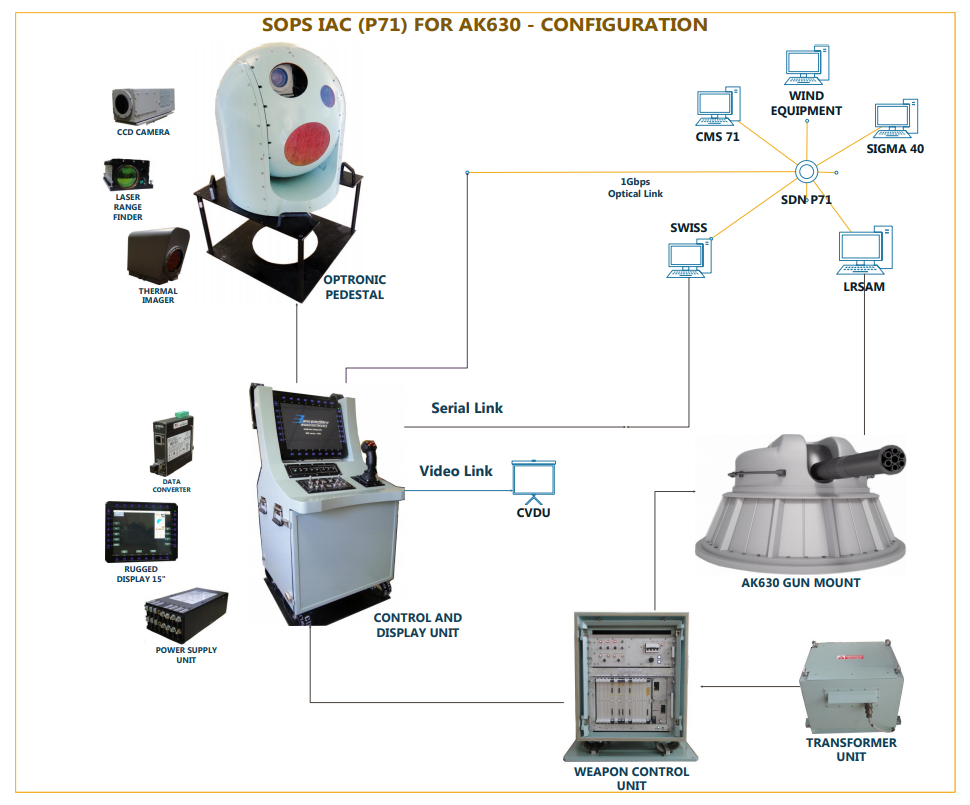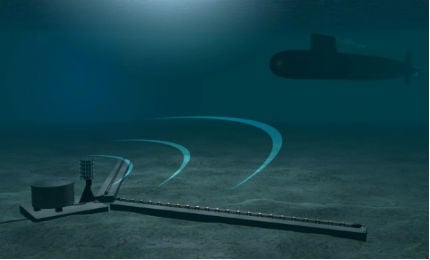SOURCE: RAUNAK KUNDE / NEWS BEAT / IDRW.ORG

Indian defence technology firm, Johnnette Technologies, is making significant strides in bolstering the capabilities of the Indian Army. Based in Uttar Pradesh, the company has recently completed a training program for the Indian Army to operate its cutting-edge JF-2 unmanned aerial vehicle (UAV).
The JF-2, touted as India’s first fixed-wing, hand-launched, stealth UAV, is designed to excel in border intelligence, surveillance, and reconnaissance (ISR) missions. Equipped with day and night thermal imaging cameras, the UAV offers superior surveillance capabilities. Its anti-jamming and anti-spoofing features, coupled with a crash-resistant avionics bay, ensure its reliability and durability in challenging environments.
Continue readingSOURCE: AFI

With Japan loosening its grip on defense exports, a new chapter in India-Japan military collaboration could be underway. While the first potential sale might be a “Unicorn” naval stealth antenna for Indian warships under a technology transfer agreement, India’s true interest lies deeper – in acquiring expertise for its ambitious 12-ship diesel-electric submarine Project-76 program.
Sources at idrw.org report India’s keenness on specific Japanese submarine technologies, particularly material and battery management systems. These are crucial for the silent and efficient operation of submarines, areas where Japan boasts a world-class reputation.
Continue readingSOURCE: AFI

A significant milestone has been achieved in the indigenous production of the BrahMos supersonic cruise missile, as confirmed by a company spokesperson to Sputnik. The manufacturing process for this potent weapon has now reached a 70% level of indigenization.
The BrahMos missile, a joint venture between India’s Defence Research and Development Organisation (DRDO) and Russia’s NPO Mashinostroeniye, has been a cornerstone of India’s military modernization efforts. The increasing level of indigenization in its production is a testament to the country’s growing self-reliance in defense technology.
Continue readingSOURCE: AFI

Bharat Electronics Ltd. (BEL), a state-run defense equipment manufacturer in India, has announced the securing of new orders valued at ?695 crore. These orders encompass a wide range of advanced defense technologies, including Combat Management Systems, Communication Equipment, Stabilized Optronic Pedestals, and various upgrades, spares, and services. This achievement underscores BEL’s pivotal role in strengthening India’s defense capabilities and its ongoing commitment to the “Make in India” initiative.
BEL’s newly secured orders highlight the company’s expertise and versatility in developing and supplying critical defense technologies. The ?695 crore worth of orders includes:
Continue readingSOURCE: AFI

The Indian Space Research Organisation (ISRO) showcased a scaled model of its upcoming Surya NGLV (Next-Generation Launch Vehicle) rocket at the National Space Day event in Delhi. During the event, ISRO shared more detailed information about this advanced rocket, highlighting its mission objectives, new technologies, and capabilities. The Surya NGLV represents a significant step forward in India’s space ambitions, offering enhanced payload capacities and incorporating cutting-edge technologies.
The Surya NGLV is designed to be a partially reusable launch vehicle, aligning with ISRO’s goals of achieving cost-effective and sustainable space missions. It is tailored to meet India’s future requirements for launching heavier and larger payloads, including human-rated missions. The Surya NGLV will have a payload capacity of up to 30 tons to Low Earth Orbit (LEO) and 10 tons to Geostationary Transfer Orbit (GTO). This substantial payload capability will enable ISRO to undertake a broader range of missions, from deploying large constellations of satellites to human spaceflight endeavors.
Continue readingSOURCE: IDRW.ORG TEAM

The United States Department of State has approved the potential sale of Anti-Submarine Warfare (ASW) sonobuoys to the Government of India, valued at an estimated $52.8 million. This approval was announced by the Defense Security Cooperation Agency (DSCA) in a notification to Congress.
The Indian government has requested the purchase of AN/SSQ-53G High Altitude Anti-Submarine Warfare (HAASW) sonobuoys, AN/SSQ-62F HAASW sonobuoys, AN/SSQ-36 sonobuoys, technical publications and data documentation, US Government and contractor engineering and technical support, and other related logistics and program support services.
Continue readingSOURCE: IDRW.ORG TEAM

In a significant step to bolster maritime security in the Indo-Pacific region, India and Japan have agreed to co-develop an advanced underwater surveillance system. The decision was announced during the recent 2+2 Foreign and Defence Ministerial meeting between the two countries.
The proposed system will have the capability to monitor not only surface vessels but also underwater movements of platforms. This development comes amid growing concerns over China’s increasing submarine activities in the region. Japan has been particularly wary of Chinese underwater platforms being used for surveillance and intelligence gathering.
Continue readingSOURCE: AFI

The Indian Army continues to enhance its capabilities through innovative technology and indigenous development. Recently, the Transfer of Technology (ToT) for two groundbreaking innovations, “Xploder – IED Disposal & Room Intervention Unmanned Ground Vehicle (UGV)” and “Agniastra – Multi-Target Portable Detonation Device,” was facilitated by the Foundation of Innovation & Technology Transfer (FITT). The event, held in the presence of Lieutenant General NS Rajasubramani, Vice Chief of the Army Staff (VCOAS), marks a significant step forward in the Army’s modernization and self-reliance efforts.
The two innovations were developed by Major Rajprasad RS of the Indian Army Corps of Engineers, and they address critical operational challenges faced by soldiers in the field. These innovations represent a significant advancement in the Army’s capabilities to handle dangerous situations, such as explosive ordnance disposal and hostile room intervention, with greater safety and efficiency.
Continue readingSOURCE: AFI

Admiral Dinesh Kumar Tripathi, the Chief of Naval Staff (CNS) of the Indian Navy, recently visited SagarDefence Engineering Ltd. to review innovative projects under the Innovations for Defence Excellence (iDEX) program. The visit underscored the Indian Navy’s commitment to adopting advanced technologies to enhance its operational capabilities. Admiral Tripathi’s engagement with SagarDefence was marked by a comprehensive review of two of their most promising technologies: the Autonomous Underwater Vessel (AUV) and the Weaponised Boat Swarm.
During his visit, Admiral Tripathi received in-depth briefings on various projects spearheaded by SagarDefence under the iDEX initiative. The iDEX program, launched by the Ministry of Defence, aims to foster innovation and technology development in the defense sector by involving startups, MSMEs (Micro, Small, and Medium Enterprises), and individual innovators.
Continue readingSOURCE: AFI

India’s “Make in India” initiative is set to reach a new milestone with the announcement of a joint venture between India and Russia to fully localize the production of the AK-203 assault rifles in India. This collaboration aims to ensure that by December 2025, the Kalashnikov AK-203 rifles will be assembled entirely from locally produced components, marking a significant step towards self-reliance in defense manufacturing.
The joint venture between India’s Ordnance Factory Board (OFB) and Russia’s Kalashnikov Concern under the umbrella of Indo-Russia Rifles Private Limited (IRRPL) will see the production of AK-203 rifles become fully localized. This means that every component of the rifle will be manufactured in India, utilizing local materials, expertise, and labor. The move aligns with Prime Minister Narendra Modi’s vision of making India a hub for defense manufacturing and reducing dependence on foreign imports.
Continue readingSOURCE: AFI

The Indian Space Research Organisation (ISRO) is gearing up for its next big venture in lunar exploration with the Chandrayaan-4 mission. ISRO Chairman S. Somanath recently disclosed new information about the upcoming mission, highlighting its complexity and the cutting-edge technology that will be employed. Chandrayaan-4 is set to be a landmark mission for India, involving a sample return mission from the Moon—an ambitious feat that has only been attempted by a few countries to date.
The Chandrayaan-4 mission is designed as a sample return mission that will bring back materials from the lunar surface to Earth. This complex mission involves five separate modules, each with a distinct role. After reaching lunar orbit, the mission will unfold through several intricate stages:
Continue readingSOURCE: AFI

INS Kamorta, an Anti-Submarine Warfare (ASW) corvette and the first of its class in the Indian Navy’s Sunrise Fleet, celebrated its 10th anniversary on August 23, 2024. Indigenously designed by the Indian Navy Warship Design Bureau and constructed by Garden Reach Shipbuilders & Engineers (GRSE) in Kolkata, INS Kamorta has been a symbol of India’s growing maritime capabilities and technological prowess.
Since her commissioning on August 23, 2014, INS Kamorta has played a crucial role in safeguarding India’s maritime interests. Named after the Kamorta Island in the Andaman and Nicobar archipelago, the ship is designed to undertake a range of missions, including anti-submarine warfare, surveillance, and coastal defense. Over the past decade, INS Kamorta has demonstrated exceptional versatility and adaptability in various operational scenarios, living up to her motto, “Shatrunam Sanghataka,” which translates to “Vanquisher of Enemies.”
Continue readingSOURCE: RAUNAK KUNDE / NEWS BEAT / IDRW.ORG

The Research & Development Establishment (Engineers) (R&DE(E)), a premier research organization under the Defence Research and Development Organisation (DRDO), has made significant strides in developing small-scale demonstrator technologies for Electromagnetic Launch Systems (EMALS). These technologies hold the potential to revolutionize aircraft launch operations, particularly for naval applications.
R&DE(E) has successfully developed a scaled technology demonstrator that can launch payloads up to 400 kg (equivalent to a UAV) within a short span of 16 to 18 meters. The focus is now on scaling up these technologies to create a full-fledged EMALS system for naval aircraft carriers.
Continue readingSOURCE: RAUNAK KUNDE / NEWS BEAT / IDRW.ORG

In a significant step towards enhancing the capabilities of the Indian Armed Forces, the Defence Research and Development Organisation (DRDO) and Hindustan Aeronautics Limited (HAL) are set to collaborate on the development of an indigenous airborne electronic warfare (EW) pod for the Light Combat Helicopter (LCH) Prachand.
The EW pod is designed to be integrated into the inner tower of the LCH, providing crucial electronic countermeasures to protect the helicopter from radar-guided missiles and other threats. Notably, the pod’s cylindrical, streamlined design will ensure its compatibility with other rotary-wing platforms, expanding its potential applications beyond the LCH.
Continue readingSOURCE: RAUNAK KUNDE / NEWS BEAT / IDRW.ORG

India has emerged as a potential supplier of helicopters for the Argentine Navy, as confirmed by the Chief of General Staff of the Argentine Armada, Contralmirante Carlos María Allievi.
Hindustan Aeronautics Limited (HAL) has extended an offer to the Argentine Army for its ALH-Dhruv and LUH helicopters to replace the ageing Bell UH-1 fleet. To enhance the prospects of securing the contract, HAL has proposed technology transfer for the local assembly of these helicopters. This move aligns with the company’s broader strategy to expand its footprint in the South American market, where several countries have expressed interest in its products.
Continue reading